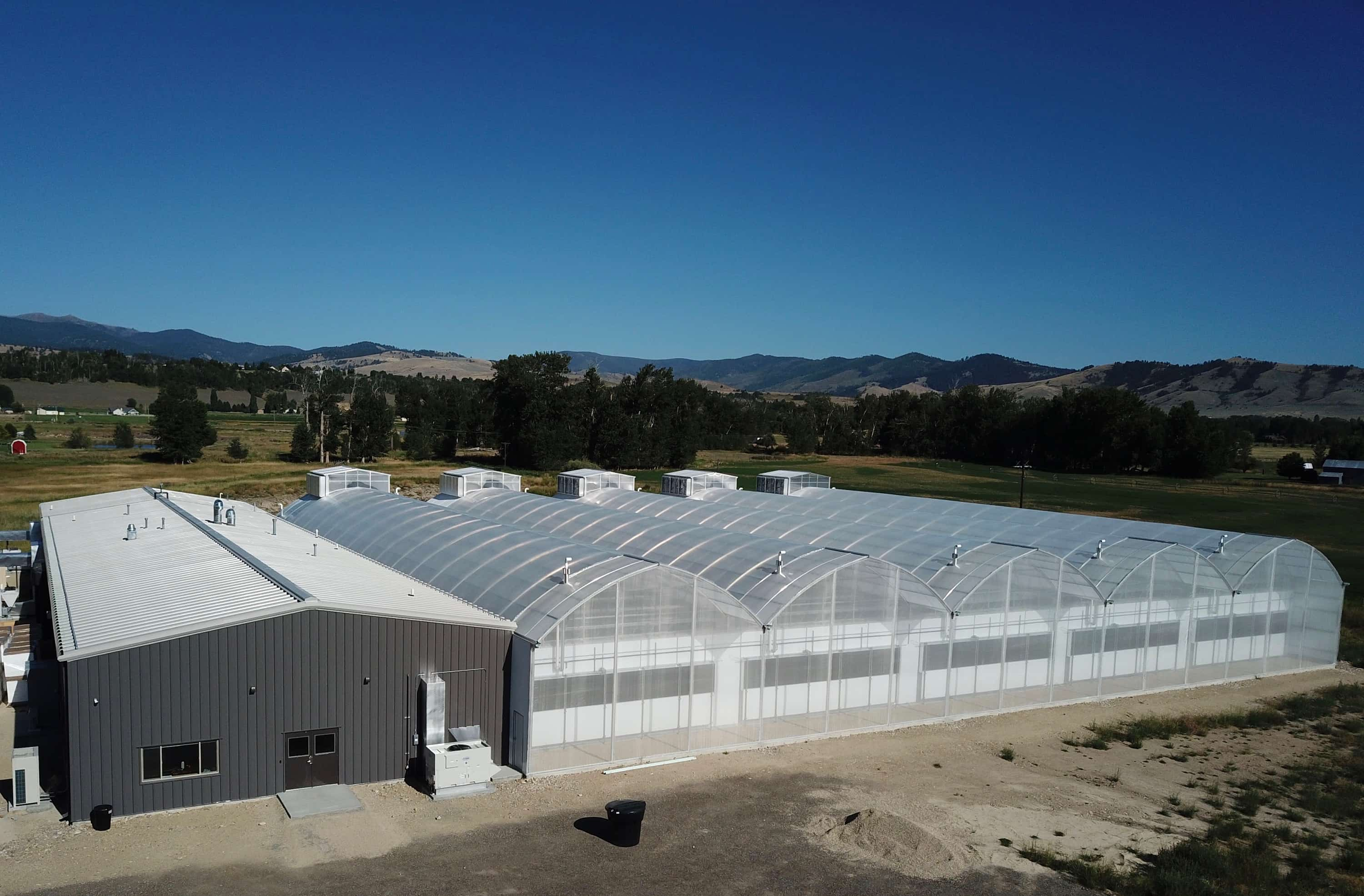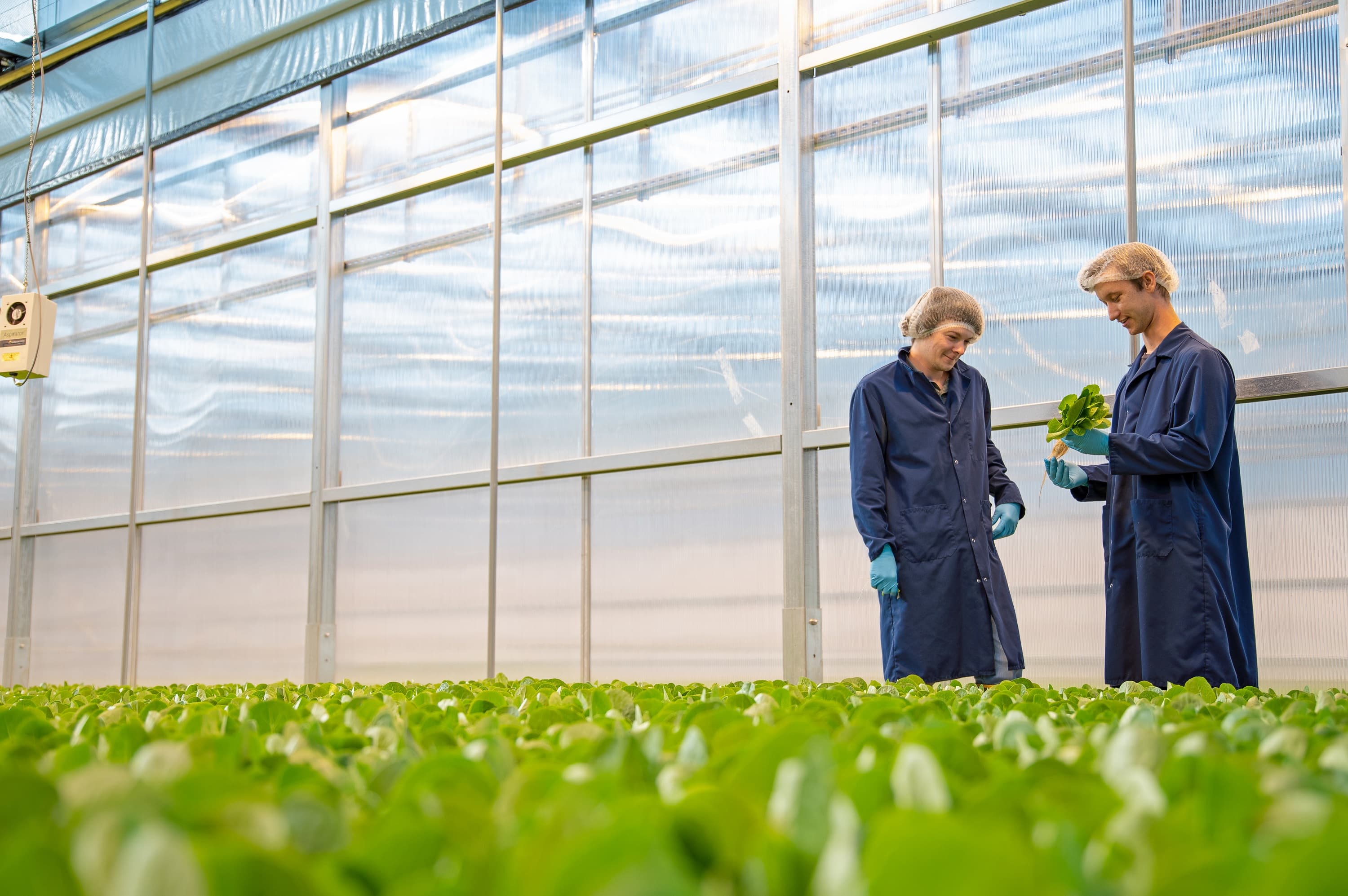The distance fresh produce travels to get from farm to store can determine whether the produce ends up as food on the consumer’s plate or as waste in the landfill. Local Bounti has created a sustainable business model that ensures that more fresh produce ends up on the plate, while also minimizing their overall carbon footprint.
Founded in 2018 in Hamilton, MT, Local Bounti is a hybrid-solution grower that specializes in fresh, non-GMO, locally-grown leafy greens. Under its Turn a New Leaf trademark, the company operates under three tenets of sustainability — environment, community, and employees — and focuses on increasing produce shelf life, reducing waste and emissions, and addressing the availability of high-quality produce to local communities who might otherwise have no access. Its facilities have since expanded to California and Georgia and soon into Texas and Washington state.
Transparency is at the core of its mission, which is reflected in its partnerships with the Global Reporting Initiative (GRI), Sustainability Accounting Standards Board (SASB), Agricultural Products Sustainability Accounting Standard and was one of the first North America Controlled Environment Agriculture (CEA) companies to become a participant in the United Nations Global Compact Initiative. In June of 2022, Local Bounti joined the Russell 2000® Index.
UN Sustainability Development Goals:
2 – Zero hunger
6 – Clean water and sanitation
7 – Affordable and clean energy
8 – Decent work and economic growth
9 – Industry, innovation, and infrastructure
11 – Sustainable cities and communities
12 – Responsible consumption and production
13 – Climate action
14 – Life below water
15 – Life on land
16 – Peace, justice and strong institutions
17 - Partnerships for the goals
“We want to put the information out and then, hopefully, the rest of the industry will come along for the ride,” says Gary Hilberg, Chief Sustainability Officer.
The challenge: A thousand miles to the landfill
All produce is not created equal. While a carrot can stay fresh on the shelf for months, leafy greens have a limited — and often very short — shelf life. Given that one-third of food produced for human consumption is wasted annually, it is no surprise that 30–40% of that waste is produce. Contributing to the problem is the distance and the amount of time it takes to get from the farm to the grocery store where it will be sold.
Traditional farming relies on the weather, and farms must locate in areas where the weather is conducive to their growing methods and where they can maximize their growing season. This means, however, that leafy greens can be shipped from farms that are upward of 1,500 + miles away from the store where they will be sold.
The leafy greens industry resides mainly in California; with a head of lettuce grown there, the product travels 200 miles or so, but for a retailer or consumer in Texas, it can travel 500 to 1000 miles, for Montana or Washington, 1500 miles. The effects of traveling that distance can lead to damaged products and excessive food loss (approximately 30 – 50 percent). This loss not only impacts the environment but also wastes the effort, time, and money that go into the production of the product. As we face a growing global food crisis, getting more food onto plates will be critical to feeding the world.
In the case of romaine and other head lettuces, the greens get shipped to a packaging plant where the outer leaves are stripped and the greens are then bagged or tagged, further extending the handling and travel time and distance as well as the amount of waste created.
With leafy greens, time is of the essence. From the moment the greens are harvested they begin to break down. This leaves approximately 10 - 21 days post-harvest, depending on the growing environment, for the greens to be shipped for processing and packaging, get packaged, get to the store, be purchased by the consumer and eaten before they become waste. The longer the greens remain in transport, the shorter the shelf life, both in-store and in the consumer’s home.
This not only presents sustainability challenges in the area of food loss and food waste resulting from limited freshness but also adds to carbon production when the waste is disposed in the landfill and, in addition, adds to the increased carbon emissions due to the extended hauling distances, the equipment used in the field and increased consumer trips to the store to replace lost/wasted produce.
Water management is another sustainability challenge presented by conventional farming. Currently, agriculture accounts for over 70% of total freshwater withdrawals worldwide. Many farms use spray irrigation to water and fertilize their fields with little control over how much water each plant gets or how much is lost to evapotranspiration and leaching. This can be problematic given that some areas in California enforce strict controls that limit how much water can be used at a given time. Field run-off from outdoor farming compounds water management and can cause contamination to the local water source. Local Bounti is able to capture all water within its system eliminating agricultural run-off.
Local Bounti’s Stack & Flow Technology™ – an innovative new hybrid method of indoor farming that combines the best of vertical and greenhouse farming – uses up to 90% less water and 90% less land than traditional farming.
Through this process, Local Bounti can grow produce in an environmentally friendly manner that increases harvest efficiency and reduces the cost and carbon footprint of the production and distribution process. The technology is over 30 times more productive per acre than traditional agriculture.
From the beginning, Local Bounti set out to transform the industry in a way that was sustainable in the long-haul.

The solution: Growing local with controlled environment agriculture
Controlled Environment Agriculture (CEA) consists of various types of systems that take a technology-based approach to farming. CEA can include simple shade structures and hoop houses and greenhouses to full indoor or vertical farms with advanced systems that are fully automated, closed loop systems with controlled lighting, water and ventilation.
While CEA may not completely replace traditional agriculture, it offers an alternative solution that (1) provides greater control over external atmospheric variables due to the enclosed atmosphere, (2) preserves water through the use of a closed loop watering system, (3) allows growing with dramatically less use of pesticides vs. traditional growing technologies, and (4) allows the growth of leafy greens in less hospitable climates, thereby reducing the travel time from farm to retailer to consumer.
Local Bounti’s proprietary Stack & Flow Technology™ — a hybrid of vertical and hydroponic greenhouse farming — allows them to grow local leafy greens in extreme climates like Montana and Georgia (where two of its indoor growing facilities are located) all year long.
Local Bounti employs vertical Stack technology and multiple hydroponic greenhouse technologies in its growing process. Our Stack technology deploys space and energy efficient grow space to propagate and Flow young plants into our greenhouses, which enables 1.5-2 times more greenhouse turns compared to traditional hydroponic greenhouse farming.
Local Bounti has integrated its Stack technology with multiple hydroponic greenhouse technologies. One is Deep Water Culture (DWC; or raft system). In DWC, plants are grown in substrate-based plugs(made up of decomposed organic matter). The plugs grow on a float, where the roots and substrate are submerged in a well-oxygenated solution of nutrients and water 24 hours a day. The idea is that more water means more stability in the nutrient solution, which will require less overall monitoring and maintenance.
Another technology used is the Nutrient Film Technique (NFT), where the plants are grown by maintaining a nutrient solution around the roots and substrate. In the NFT system, the substrate is added directly to the trough and the plant roots lie at the bottom. A shallow stream (film) of water, containing all the required nutrients for plant growth, is pumped from the nutrient reservoir into the top end of the sloped growing channels (troughs), which then flows back down the slope and into the nutrient reservoir, where the water is then recharged with nutrients and put back into the system.
Ventilation is critical in maintaining temperature, humidity and CO2. While natural ventilation is suitable for milder climates, such as their southern California locations, the more severe weather in its Montana facility requires a forced/mechanical ventilation system that reduces the vertical temperature stratification, leading to better air distribution and plant growth. The same principle can be applied to lighting.
In the right climate (e.g., California), natural light will be sufficient; however, in a location with varying climates, the use of artificial lighting ensures that the plants receive the precise amount of light they need. The daily light intensity and light duration per day can be set up and controlled using a timer, which alleviates the x-factor of inclement weather and adequate sunlight on any given day.
An added benefit of controlled environment agriculture is the ability to create a product that is ready to eat. Because the greens are not affected by outside influences such as wildlife, pests, etc. the triple washing process and the use of pesticides required in traditional agriculture is eliminated.
Adding to its efficiency, Local Bounti has a packaging plant on premises at each of its greenhouse facilities, further minimizing the travel time of the produce. The greens are typically packaged the same day they are harvested and shipped within 24 hours. This, combined with its goal to place facilities within a 400-mile radius of its retail partners, results in less travel and longer shelf life and ensures the consumer is purchasing a product that will last weeks in their refrigerator rather than days.
“We are gaining end customers because of the lack of food waste they're experiencing. We hear that from folks. ‘We love buying your product because we don't have to throw half of it away,’” says, Laura Hann, Local Bounti Government & Community Affairs Manager.
The takeaway:
Using fewer resources for greater yields
While it can take a few years for a business to develop to the point where it gets paid to be sustainable, there are ancillary benefits that can be gleaned sooner. Retailers and consumers alike recognize the consistency that comes with a more advanced growing process.
Keeping production facilities local requires less input for distribution while ensuring better food quality due to minimal travel and handling. This results in 80% less food miles, leading to an increase of three to five times the typical shelf life. CEA provides added solutions to other challenges of farming as well.
Because the greens are grown in a CEA environment, there is little to no need to strip the outer layers of the greens due to damage from pests, wildlife or transport. “We don’t have a lot of losses in our process,” says Hilberg. This is a huge cost benefit when taking into account the production cost of the throw-away portion of the greens, including fertilization, transportation, and irrigation.
The industry standard for water use in traditional farming is approximately 90 gallons per pound of lettuce and, without the need to irrigate or triple wash an entire field of greens, Local Bounti facilities average from 3.5 to 9.5 gallons of water per pound of product — a substantially lower water footprint toward its goal of 90% less water use.
Because of its sustainability efforts, Local Bounti is gaining customers who support the initiative to eliminate food waste and other sustainable objectives. Sustainable agriculture delivers products that meet consumer needs, while also transforming the industry. It is a process, but one well worth taking on, according to Hilberg.
“If you ignore sustainability today, will it be better or worse in five years? It’s a journey. Know what the end goal is, and just start.”
More information on Local Bounti’s sustainability efforts can be found in its 2021 Sustainability Report.
